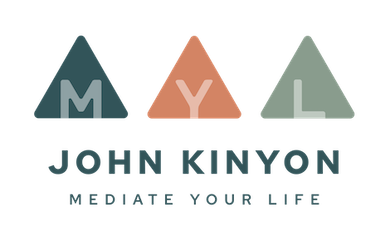The Mystery and Power of the Triangle to Transform Conflict
A Warm and Welcoming Hello to You All,
As we navigate the complex challenges of our time, I have been thinking a lot about the structure of the triangle. In this newsletter, I talk about the layers of meaning in this symbol and how it relates to mediating our lives and applying this understanding in practical ways to the challenges that we face.

The number three holds significance across many religious and mystical traditions, symbolizing harmony and unity. But how does the triangle help our mind-body nervous systems when it’s reacting to a conflict moment or situation?
I have come into the mysteries and power of the triangle through being a mediator. Mediation is the radical, beautiful idea that a third side can support two sides in conflict by being equally concerned with the wellbeing of each, and support creative solutions to emerge that meet the needs of both. Time and again, for decades now, I have been amazed by the shifts I’ve seen happen in people when we are in this structure together. While this process seems amazing to me in and of itself, the triangle actually holds an even deeper meaning.
The triangle symbolizes for me the relationship between conscious awareness and the subconscious. The top of the triangle represents the conscious self and the wholeness and unity experienced when we are mindfully aware. The two points on the bottom of the triangle represent all parts of ourselves that operate subconsciously — habitual, automatic thoughts, feelings, and actions. As in mediation, the conscious self can empathically, compassionately support the subconscious parts by equally seeing, hearing, feeling, and caring for them and their needs.
This is the deep insight of Internal Family Systems (IFS) creator Richard Schwartz. It is also in Kristin Neff’s Mindful Self-Compassion, the loving-kindness practices of Buddhism, and all the great spiritual traditions.
In Richard Schwartz’s book, No Bad Parts, the idea is presented that none of our subconscious parts are intrinsically harmful. The parts of us that “do harm” take on those roles out of necessity, to protect us and cope with difficult, harmful, or traumatizing situations. The Self of awareness (the top of the triangle) brings empathy, care, and healing to the parts.
Right now as you read this, are you aware of thoughts in your mind and feelings in your body? Is there a situation in your life that is troubling you? Bring the image of the triangle to your mind. See if the meaning encoded in this ancient symbol activates a shift towards connection and new possibilities emerging in you.
Perhaps imagine your arms reaching out to hold, with loving presence and understanding, all that is going on in your mind and body. You are the whole triangle, these relationships, this trinity. How does it feel to relate to yourself this way? Can you imagine relating to parts of others like this, as well as yourself? How about doing it even when you are experiencing conflict with someone?
The beauty of this is that it requires a capacity that we all inherently possess. The mediation “third side” isn’t just something external—it’s a part of us, a perspective we can choose. When we combine this awareness with practical skills and actions, we hold a very powerful toolkit for life’s challenges that come. Not only does it provide inner stability and a sense of grounding, but it creates new opportunities and possibilities, even in the most challenging situations.
